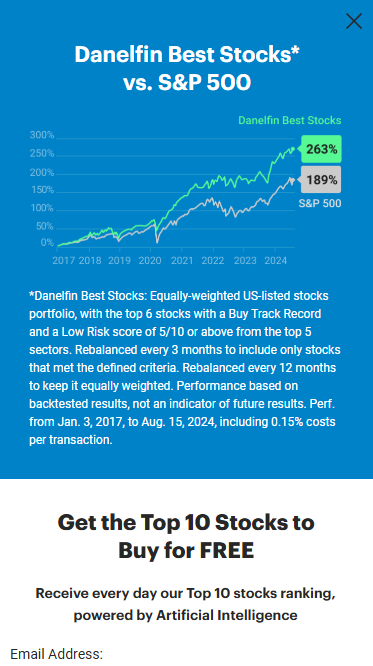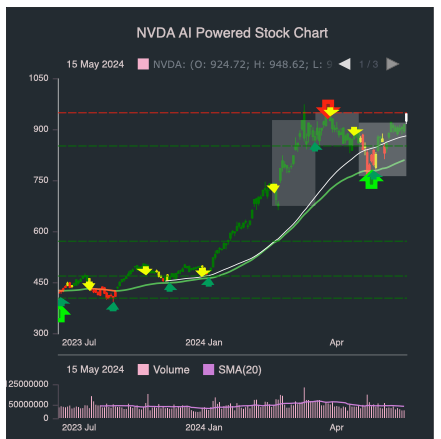The User Interface (UI) and the User Experience (UX) of AI trading platforms that predict and analyze stocks are crucial to ensuring usability, efficiency and general satisfaction. An ineffective user interface may hinder decisions even when the AI models that underlie it are highly efficient. Here are the top ten tips for assessing UI/UX.
1. The user's ease of use as well as the user-friendlyness of the product is evaluated
Navigation: Make sure the platform is easy to use, using menus and buttons that are simple to comprehend, as well as workflows.
Learning curve: Assess how fast an individual can be able to learn and utilize a system without extensive instruction.
Consistency - Check the patterns used on all platforms for uniformity (e.g., button colors, styles).
2. Check for Customizability
Dashboard customization: Determine whether dashboards can be customized by users to display relevant information, charts, and metrics.
Layout Flexibility: The platform must let users change the layout, size or even move widgets.
Themes and preferences: Find out if the platform offers dark/light styles or other options for visuals.
3. Visualize the data with the Assess Tool
Chart quality - Ensure that the website has high-resolution interactive charts (e.g., candles and line charts), with panning, zooming, and other features.
Visual clarity - Check to ensure that data is displayed clearly, using appropriate tools, labels or legends.
Real-time Updates: Check to see if your visualizations reflect the most current market information.
4. Test for Speed and Reactivity
Loading times: Ensure the platform is loaded quickly regardless of handling huge datasets or complex calculations.
Real-time performance: Find out if your platform is able to handle feeds of data which are updated in real time without lags or delays.
Cross-device compatibility: Check to see if your platform is compatible with every device (desktops and mobiles, as well as tablets).
5. Assess accessibility
Mobile app accessibility: Determine whether the platform is equipped with a mobile app that is fully capabilities to trade on the go.
Keyboard shortcuts. Be sure the platform provides keyboard shortcuts for users who are skilled.
Accessibility features: Determine that the platform meets accessibility guidelines (e.g. screen reader support, high-contrast modes).
6. Examine the Search and Filter Functions
Search efficiency: Ensure that the platform is able to let users quickly search for indexes, stocks or any other asset.
Advanced filters: Determine whether the user is able to apply filters to produce results that are more specific (e.g. by capitalization, sector, or performance metrics).
Saved searches - Make sure that the platform permits you to save frequently used filters or searches.
7. Check for Alerts, Notifications and other information
Alarms that can be customized: Make sure users have the ability to set up alarms for specific situations.
Notification delivery: Verify that alerts are sent out via multiple channels.
Check for promptness and accuracy of alarms.
8. Evaluation of Integration with Other Software
Integration with brokers: The platform must be linked to your brokerage account to ensure that transactions can be completed effortlessly.
API access: Find out if advanced users can access the API to build their own custom tools or workflows.
Third-party integrations: Check whether the platform is compatible with other applications (e.g., Excel, Google Sheets or trading bots).
9. Review Help and Support Features
Take a look at the onboarding instructions.
Help center. Make sure that the platform has an extensive help center.
Customer support: See whether you are able to get a quick response from the platform (e.g. via live chat, via email, or on the phone).
10. Test User Satisfaction Overall
Feedback from users: Review and testimonials of research conducted to determine the general level of satisfaction of UI/UX.
Trial period for free: Test the platform for free and evaluate its usability.
How does the platform handle edges and errors?
Bonus Tips:
Aesthetics. Functionality is essential, but a visually appealing layout can boost the experience of users.
Performance under stress Test your platform in highly volatile markets to ensure it's stable and responsive.
Community and forums: Check whether the platform has an active community of users or forum in which users can share tips and feedback.
These tips will help you examine the interface for users and user experience of AI trading platforms that forecast or analyze the prices of stocks. You can make sure they're efficient, in line with your needs in trading and user-friendly. The UI/UX of a trading platform can have a significant impact on the ability of you to make informed trades and take the most effective decisions. Have a look at the top my website stock ai for more info including incite, AI stock trading, AI stocks, market ai, best AI stock trading bot free, market ai, ai investing platform, ai for investing, ai for trading, trading with ai and more.

Top 10 Suggestions To Judge The Speed And Latency Of Ai Stock Trading Platforms
When looking at AI trading platforms which can predict or analyze the price of stocks, speed and latency are crucial factors, especially for high-frequency traders and algorithmic traders. Even milliseconds in delay can negatively impact profitability and trade execution. Here are 10 top methods to determine the speed and the latency of trading platforms.
1. Real-time data feeds that are to be evaluated
Data delivery speed: Ensure the platform provides real-time data with minimal delay (e.g., less than a millisecond delay).
Closeness of data source: Determine the location of servers in proximity to major exchanges.
Data compression: Determine if the platform uses effective techniques for data compression to speed up the delivery of data.
2. Test trade execution speed
The time it takes to process your order is the time of your order that is processed and executed by the platform.
Direct market access (DMA). Make sure the platform you are using has DMA. DMA allows orders made directly to an exchange to be processed without intermediaries.
Execution Reports: Check if your platform offers specific reports on the execution of orders, with timestamps.
3. Review the responsiveness of the Platform
User interface (UI), speed: Test the platform’s response time to your inputs.
Updates to charts: Check to see if the charts and visuals are updated in real-time without delay.
Performance of mobile applications If you're using a mobile app, ensure that it runs as fast as the desktop version.
4. Look for low latency infrastructure
Locations of the servers The platform must use low-latency, high-speed servers that are located close to major exchanges or financial hubs.
Check for co-location alternatives. These services permit you to host your algorithms close to the exchange.
High-speed Networks: Verify the application's utilization of fiber-optic, high-speed network or other technologies that have low latency.
5. Assess the Backtesting and Simulation speed
Test the platform's capacity to process and analyze historical data.
The latency of the platform is required to permit live simulations of trades in real time.
Parallel processing: Determine if the platform utilizes distributed computing or parallel processing to speed complex calculations.
6. Calculate the API Latency
API response time: Check how fast the platform's API responds to requests (e.g. getting market data, placing orders).
Rate limits. Verify what limits are appropriate on the API. This can assist in avoiding delays in high-frequency transactions.
WebSocket support: Check whether the platform supports WebSocket protocols to support real-time, low-latency data streaming.
7. Test Platform Stability when Loaded
High-volume trades to test the platform's responsiveness and stability, simulate high-volume scenarios.
Market volatility: Try out the platform in periods that are high in volatility to determine if it is able to manage rapid price changes.
Test your strategy for stress: Find out whether the platform permits users to test their plan under extreme circumstances.
8. Examine Connectivity and Network
Internet speed needs. Make sure that your internet connection is speedy enough to meet the recommended speed of the platform to achieve maximum performance.
Verify connections that are not redundant.
VPN latency If you're using the VPN to connect, be sure it doesn't introduce significant latency. Also check whether the service offers alternatives.
9. Check for Speed Enhancement Features
Pre-trade analytics: Ensure the platform offers pre-trade analytics to improve the speed of execution and order routing.
Smart order routing (SOR) often referred to as smart order routing, is a method for determining the fastest and the most efficient execution sites.
Check the platform's tools to analyse and monitor latency in real-time.
10. Review User Feedback and Benchmarks
User reviews: Conduct studies to determine the platform's performance in terms of latency and speed.
Third-party benchmarks by third parties. Look for independent benchmarks or reviews that evaluate a platform's speed with other platforms.
Case studies: Check if the platform offers case studies, or testimonials, that highlight its capabilities for low-latency.
Bonus Tips
Trial period: Take advantage of the demo or trial version for free to evaluate the platform's performance and latency in actual scenarios.
Customer support: see if the platform provides assistance with issues related to latency or for optimization.
Hardware requirements. Find out if a platform requires specialized hardware (e.g. a high-performance computer) to function at optimal speed.
These tips will help you assess the speed and duration of AI software for predicting and analyzing stocks. This way, you'll be able to pick a platform that is suitable for your needs while minimizing delay. Low latency is crucial for high-frequency traders and algorithmic traders. Even minor delays can have a huge impact on the profitability. Check out the top rated invest ai for more info including ai trading tool, AI stock prediction, AI stock analysis, ai software stocks, trading ai tool, ai trading tool, AI stock prediction, ai investment tools, ai investment tools, ai software stocks and more.
